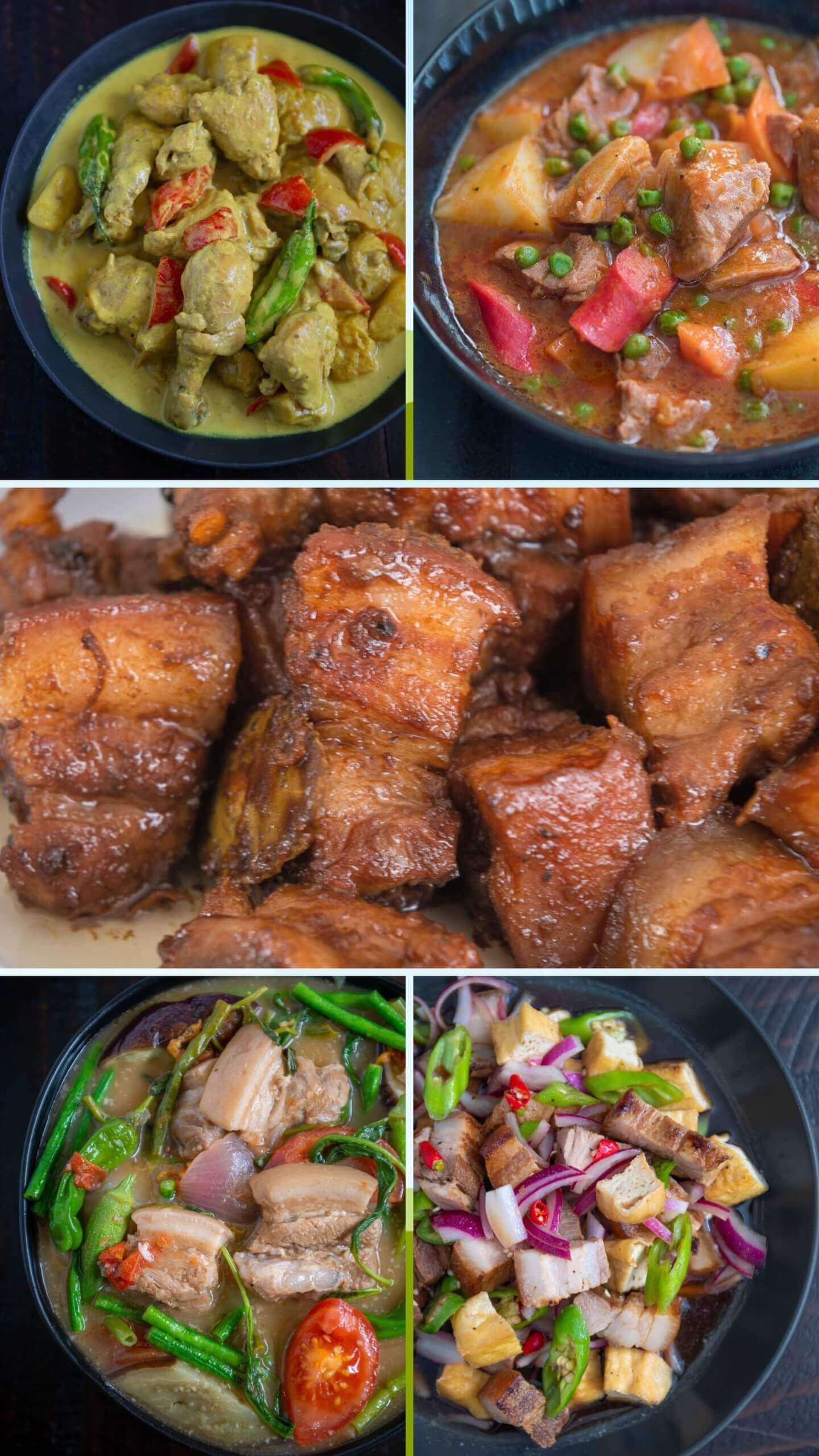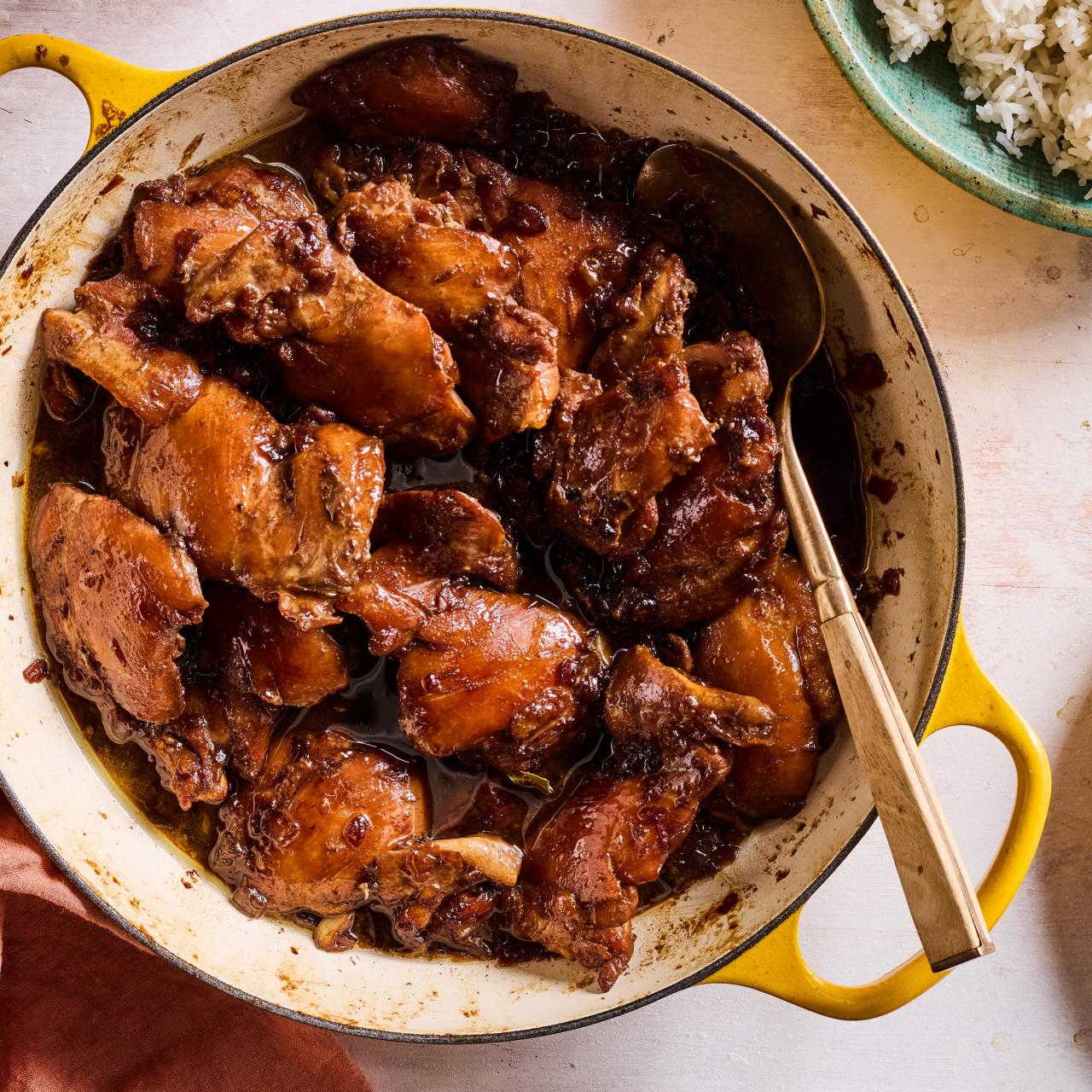Discover Delicious Filipino Food Recipes for every single Celebration
Filipino food is a rich tapestry of flavors and practices, offering an excellent selection of recipes appropriate for any event. As we discover these cooking treasures, one might ask yourself which dishes genuinely symbolize the essence of Filipino hospitality and flavor.
Conventional Filipino Dishes
Traditional Filipino dishes mirror the abundant social heritage and varied impacts that have shaped the Philippines over centuries. These cooking productions are not simply food yet embody the background, customs, and worths of the Filipino people (Filipino food recipes). Influences from indigenous techniques, along with Spanish, Chinese, and American culinary practices, merge to create a dynamic scheme of tastes
Standard recipes such as adobo, sinigang, and lechon display the equilibrium of pleasant, sour, and savory components characteristic of Filipino food. Adobo, commonly considered as the informal national dish, features marinaded meat slow-cooked in vinegar, soy sauce, and seasonings, offering a tantalizing blend of flavors. Sinigang, a sour tamarind-based soup, highlights using fresh veggies and fish and shellfish, mirroring the country's wealth of natural deposits. Lechon, a whole roasted pig, is a focal point in joyful celebrations, symbolizing event and public events.
In addition, local variants include depth to conventional dishes, permitting a rich tapestry of culinary methods. Each dish informs a story, fostering links amongst households and neighborhoods, eventually enhancing the Filipino social identity with shared culinary experiences.
Quick and Easy Recipes

One prominent alternative is "Tortang Talong," an eggplant omelet that needs just a few components. Simply grill and mash the eggplant, mix it with beaten eggs, and pan-fry until gold brownish. An additional simple dish is "Sinigang sa Miso," a fascinating sour soup that can be prepared in under half an hour by simmering fish or meat with miso paste, tomatoes, and different veggies.
For a fast side, think about "Garlic Fried Rice" or "Sinangag," which transforms remaining rice right into a tasty enhancement by sautéing it with garlic and oil. By using these quick dishes, you can relish the abundant and varied tastes of Filipino cuisine while accommodating an active lifestyle. These recipes not just please yearnings but likewise bring a preference of home to your table, making them optimal for any type of event.

Festive Party Favorites
Parties in Filipino culture are often marked by a lively selection of dishes that mirror the nation's abundant heritage and cooking variety. Joyful events, such as birthday celebrations, wedding events, and holidays, feature an excellent spread of conventional specials that not only tantalize the taste yet also cultivate a sense of area and togetherness.
Among one of the most cherished cheery favorites is lechon, a whole baked pig known for its crispy skin and succulent meat, frequently functioned as the focal point of any kind of grand party. Another staple is pancit, a noodle recipe symbolizing long life and prosperity, which can be found in many local variants like pancit canton and pancit bihon.
For sweet treats, bibingka-- a rice cake commonly made with coconut milk and topped with salty eggs-- is a must-have throughout Xmas celebrations, while leche flan, an abundant caramel custard, serves as a popular treat at different celebrations. Filipino food recipes.
Last But Not Least, no Filipino feast is full without lumpia-- crispy spring rolls filled up with a blend of vegetables and meat. These recipes, soaked in custom, not only please the palate however additionally strengthen social bonds, making every party unforgettable.
Home Cooking Classics
While several recipes in Filipino food are connected with joyful occasions, home cooking classics supply a cozy embrace that stimulates feelings of fond memories and home. These precious meals typically mirror the rich social heritage of the Philippines, blending tastes and textures that resonate with generations.
One quintessential convenience he has a good point food is Sinigang, a sour tamarind soup, frequently made with pork or shrimp and a selection of veggies. Its warm, tangy brew uses relief on rainy days, making it a staple in numerous families. Another favored is Adobo, a mouthwatering stew of meat seasoned in soy sauce, vinegar, and flavors, simmered to excellence. Each household may have its very own spin, yet the significance remains the very same-- convenience in every bite.
Lumpiang Shanghai, crunchy springtime rolls loaded with ground pork and veggies, are regularly served at celebrations and delighted in as a treat. Arroz Caldo-- a relaxing rice porridge improved with ginger and covered with fried garlic-- gives heat and nutrients, especially throughout health problem.
These home cooking classics not only please cravings yet also work as a pointer of the love and treatment instilled into every home-cooked dish.
Sweet Treats and Desserts
Filipino food offers a fascinating array of pleasant deals with and desserts that captivate the taste and reflect the country's dynamic culinary society. Among the most iconic is Leche Flan, a rich custard dessert made with eggs, condensed milk, and caramelized sugar, supplying a creamy texture and sweet flavor that is alluring. Bibingka, a rice cake generally delighted in throughout the Xmas season, is made from rice flour, coconut milk, and sugar, commonly covered with salted eggs and cheese, creating a savory-sweet equilibrium.
Another prominent dessert is Halo-Halo, a rejuvenating mixture of smashed ice, sweetened fruits, jellies, and beans, topped with leche flan and ube gelato, making it an excellent treat for warm weather condition. Turon, or caramelized banana spring rolls, integrates ripe bananas and jackfruit wrapped in a crunchy covering, supplying a wonderful problem.
Lastly, Puto, steamed rice cakes frequently appreciated as a snack or side meal, come in different tastes and colors. These desserts not only display the varied components available in the Philippines but also highlight the rich traditions and parties that accompany them, making next page each bite a wonderful experience.
Conclusion
To conclude, the exploration of Filipino food exposes an abundant tapestry of flavors and customs that accommodate diverse events. From typical recipes to quick recipes, each offering shows the social heritage and culinary creative thinking of the Philippines. Commemorative favorites and reassuring standards even more enhance the eating experience, while pleasant deals learn the facts here now with supply a satisfying final thought to any dish. Embracing these recipes cultivates admiration for the vivid food culture, inviting enjoyment and link through shared cooking experiences.